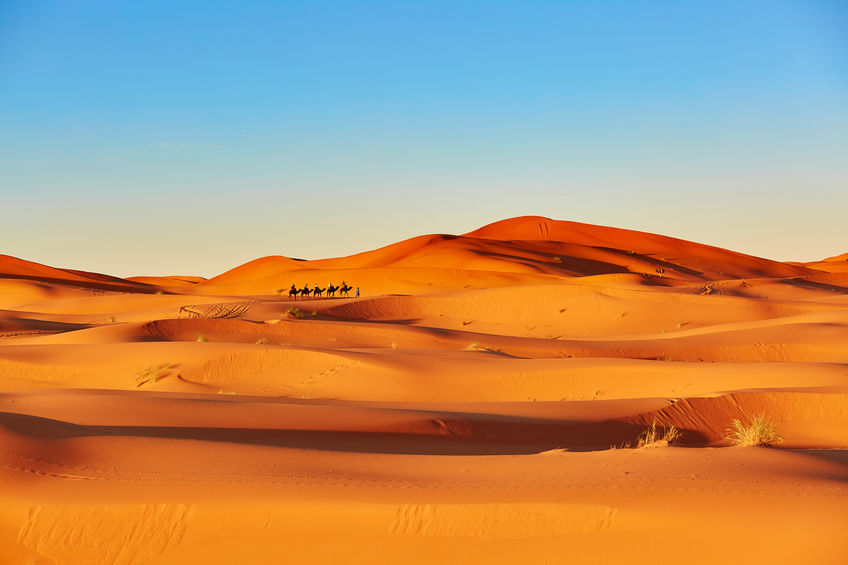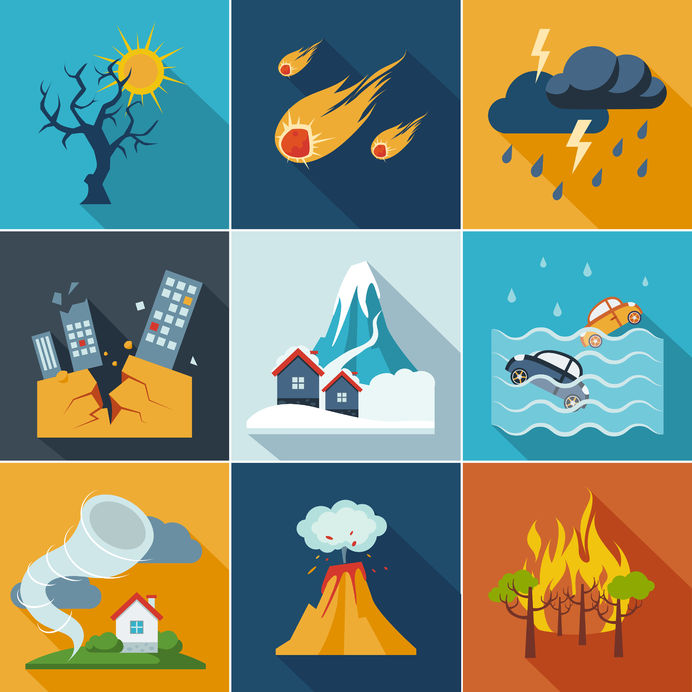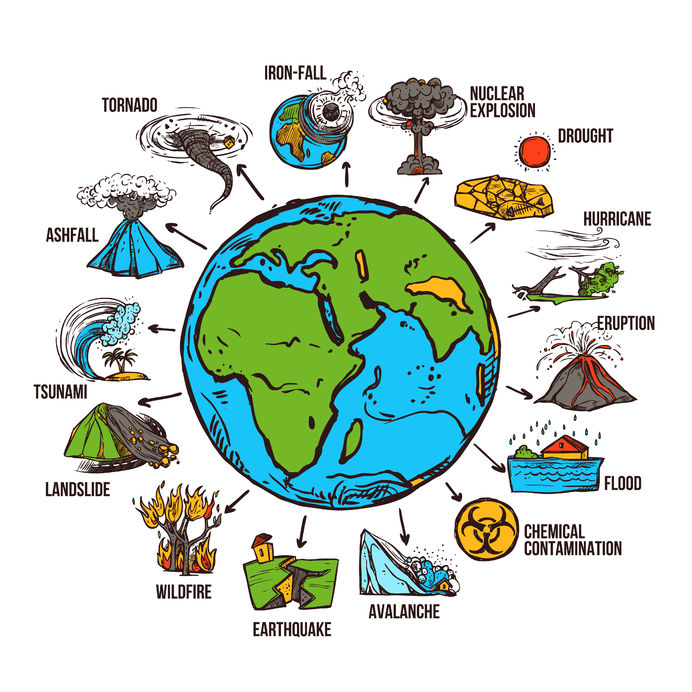Hot deserts are present mostly in the subtropical regions. These deserts can be covered by rock, sand, salt lakes, mountains, and stony hills. Most of the popular deserts are hot during the day and cold at night, and the temperature can reach up to 50 °C and at night below 0 °C.
The Sahara is considered the world’s hottest and the largest dessert in North America. The area of this desert can be greater than the area of Europe or the United States.
The Atacama Desert, which is in South America, is considered the world’s driest desert in South America. This desert has not received rain for 401 years and was made by the cold ocean current.
Why are these areas so hot when compared to others?
These deserts are present near the equator. Let’s see an example to learn more about this in detail.
For examples, let us consider two rays, namely Ray A and Ray B. Here, Ray A is striking the earth at a location similar to that of the UK, and Ray B is also striking the earth in the hot desert areas. Ray B heats a small area of the ground, so the heat is very concentrated.
Therefore, the heat can get into the small areas if the entire part is getting heat, and then the concentration of the heat is high. Due to this, the earth gets curved, the ray B heats a larger area, and the heat can be more dispersed and less intense. So that the ray B can travel further, if the ray B travels further, then it becomes weaker by collecting most of the dirt particles on its arrival.
What is FLASH FLOODING?
The flash flooding mainly occurs due to conventional rainfall and by doing so, the area becomes very hot. These warm area heat the air which is present above them, and this process force the air which is heated to rise.
Flooding can be happen when the ground gets baked very hard by the sun and the large storms raindrops are not infiltrated the surface of the desert. The rain water flows in the ground surface and excessive flow may cause flooding.
Hot deserts are easily available in every continent, such as Sahara desert, Kalahari desert, Arabian desert, the great Victoria desert in Australia, Gobi desert in Asia and The Great Basin desert in North America.

The ecosystem in Hot Deserts:
In hot deserts, all living beings have the capability to survive. Most of the time, dust, as well as sand particles, are blown by the wind. Some deserts are also helpful for making vegetation like small shrubs, trees, Cactus species, etc.
Conversion of water techniques like cuticles as well as spiny leaves are also observed in this vegetation. In addition to these, there are many plants that have adapted these techniques to open stomata during night to reduce water loss. The great thing in hot deserts is that most of the animals can survive under soil or in burrows. Some animals can live their lives in these regions like Kangaroo, rats, and reptiles, and are adapted to live under burrows.
Here, insects inhabit the trees and flowers, and birds hover around the sky; they hover to find the prey animals in the deserts.
We can find hot deserts in many tropical places in the world where rainfall is very low and evaporation is too high. Reptiles and amphibians are present in the hot deserts.





